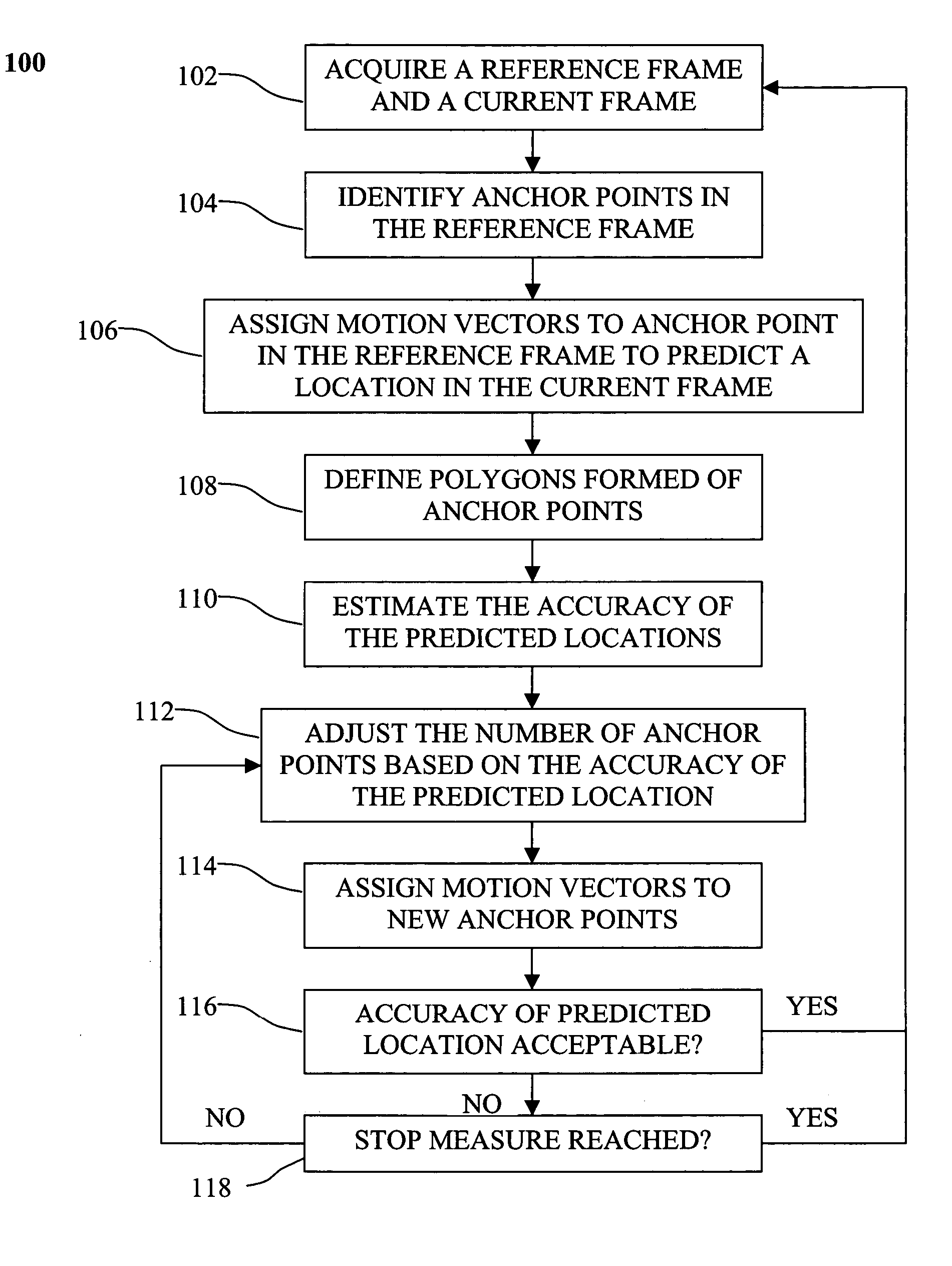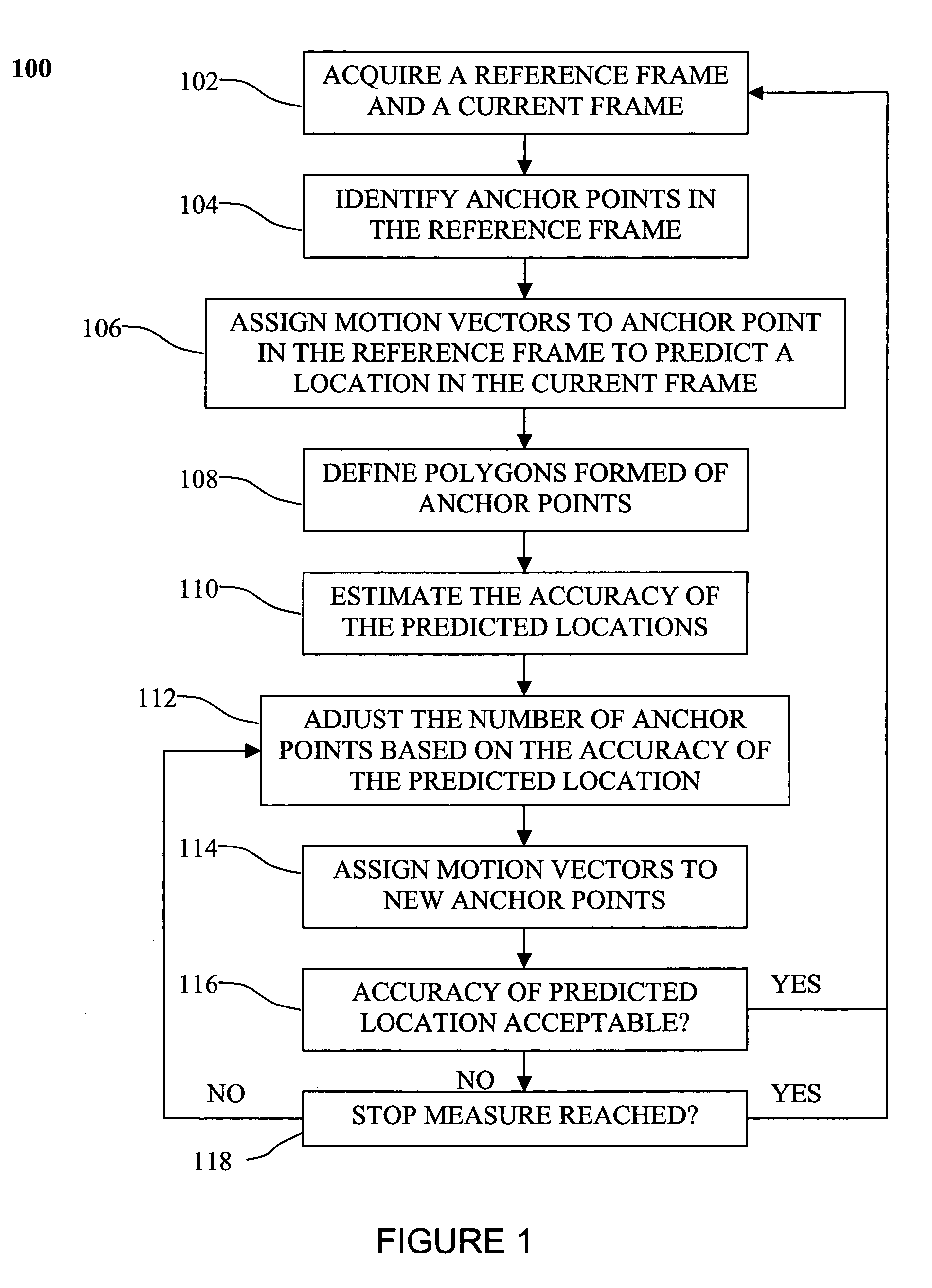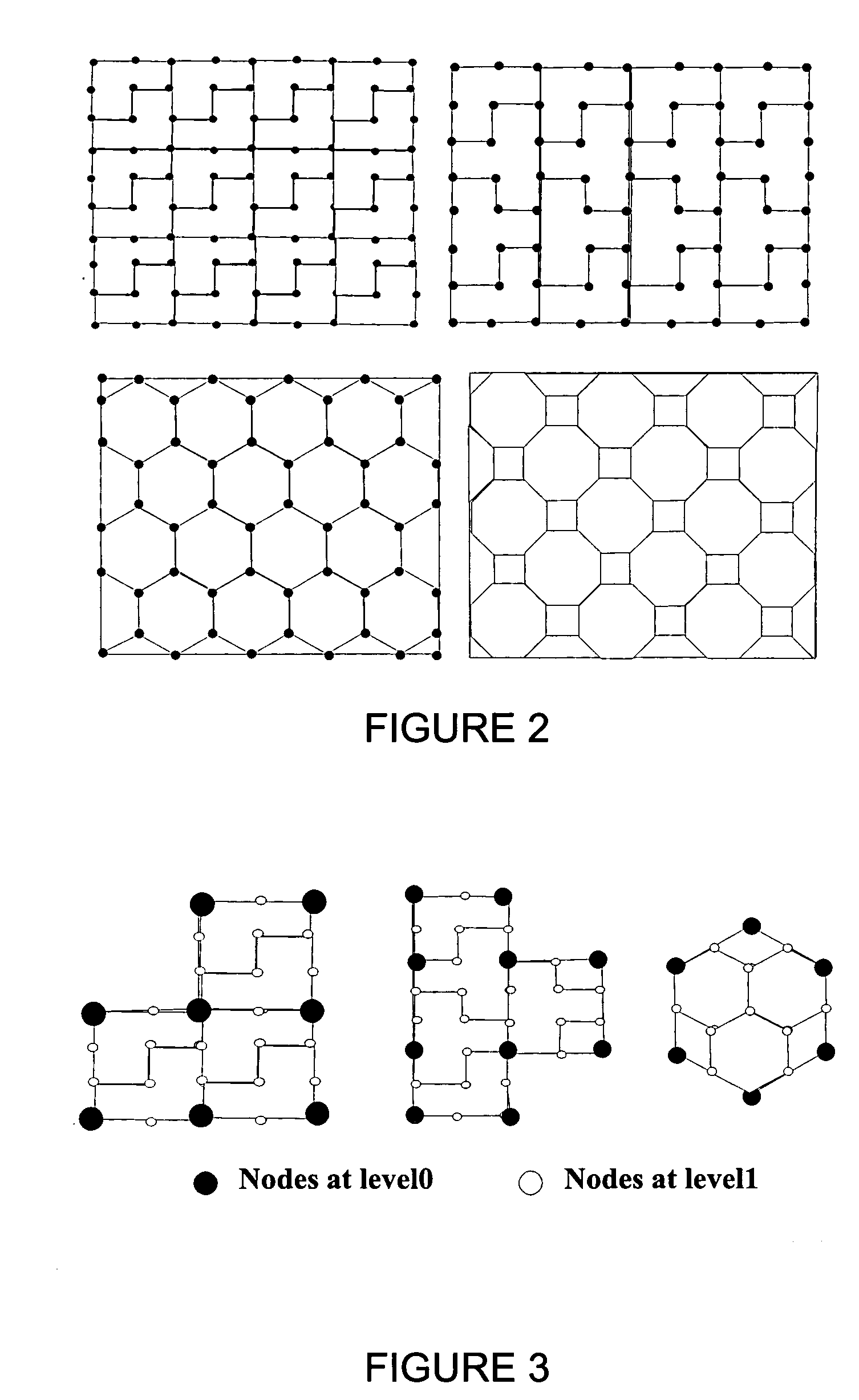Mesh based frame processing and applications
a frame processing and mesh technology, applied in image data processing, television systems, instruments, etc., can solve the problems of reducing the effectiveness of the mesh-based motion analysis model, the inability to accurately estimate the motion accuracy of the block matching model, and the inability to accurately represent the inter-frame dynamics related to the reshaping of video objects, so as to reduce the computational cost
- Summary
- Abstract
- Description
- Claims
- Application Information
AI Technical Summary
Benefits of technology
Problems solved by technology
Method used
Image
Examples
embodiment
Features
[0106] An advantage of this embodiment is that one module can be designed for both fixed and PTZ cameras. A basic system may include such features as basic monitoring and analysis, signal control, incident recording and networking. New features, such as vehicle tracking, red light enforcement, system-level control, etc., can be added later via software upgrades that can be obtained, for example, by downloading them over the network. The following table defines possible basic and expanded features:
Fixed IntersectionHighway PTZCameraCameraBasic FeaturesMonitoring & analysisXXIncident recordingXXWireless networkXXImage enhancementXXSignal controlXExpanded FeaturesSystem-level controlXVehicle trackingXZoningXEnforcementX
[0107] Monitoring and analysis can include traffic volume, density, lane occupancy, classification of vehicles, or road conditions in a lane. Signal control can include the presence of vehicles approaching or waiting at an intersection, queue length measurement...
PUM
 Login to View More
Login to View More Abstract
Description
Claims
Application Information
 Login to View More
Login to View More - R&D
- Intellectual Property
- Life Sciences
- Materials
- Tech Scout
- Unparalleled Data Quality
- Higher Quality Content
- 60% Fewer Hallucinations
Browse by: Latest US Patents, China's latest patents, Technical Efficacy Thesaurus, Application Domain, Technology Topic, Popular Technical Reports.
© 2025 PatSnap. All rights reserved.Legal|Privacy policy|Modern Slavery Act Transparency Statement|Sitemap|About US| Contact US: help@patsnap.com



